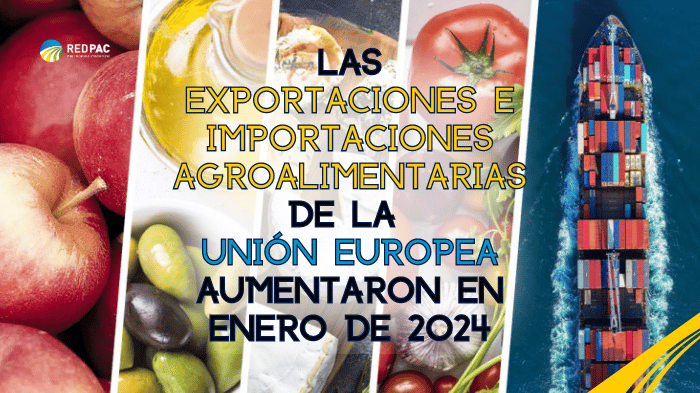
27 de May de 2024
Dinamización rural
The report, which analyzes data collected up to January 2024, concludes primarily that the EU enjoyed a trade surplus in terms of exports and imports in that month: €18.4 billion in agricultural and food product exports during that month.
- The European Union had a trade surplus of more than €5 billion in January 2024, up 27% from the previous year.
- Exports grew by 2% compared to 2024, while imports decreased by 5%.
A country's trade balance is the difference between imports and exports. A country having a trade surplus—that is, exporting more than it imports—is an advantage because the balance is positive, as it receives more money than it produces.
The European Union (EU), as a supranational entity that brings together states, generates a vast amount of data. Thanks to the new report "Monitoring EU Agri-Food Trade ," the European Commission (EC) is providing a diagnostic of this trade balance within the EU agri-food market.
Main results
The report, which analyses data obtained up to January 2024, concludes mainly that the EU was in a moment of trade surplus in that month in terms of the ratio of exports and imports: 18.4 billion euros in exports of agri-food products. during that month.
This figure represents a 2% increase over export revenues from the previous year. Key exports include cereals , cereal-based preparations, milled products, and dairy products .
Imports, on the other hand, were valued at €13.4 billion , down 5% from the same period last year due to "reduced prices in many product categories" during a time of great economic uncertainty.
Brazil, Ukraine, and the United Kingdom are the countries from which the EU imports the most, respectively, while exports go mainly to the United Kingdom, the United States, and China.
Data from Spain
Spain, whose main exports of agri-food products reached a record high in 2023 (€70.431 billion for the entire year) according to the "Annual Advance of Foreign Trade" published last March, allocates 32.6% of these exports to external trade with the EU.
Our country plays a key role in the sale of olive and olive oil products, whose exports grew the most in percentage terms (146% more revenue, reaching over €175 million). Mixed food preparations and ingredients also increased by 10%, reaching €119 million. In addition, exports of sugar and isoglucose increased in value by 152%, as did cereals (44%).
On the contrary, vegetable oil exports in general decreased dramatically, with a 43% decrease in value (€176 million); and dairy product exports fell by 7% (€108 million), although they remain the second most exported product category (8% of the EU total).
Import data
Imports of cocoa, coffee, tea, and spices increased (up 20% by €353 million). Despite the rise in olive and olive oil exports, imports of these products also increased by 168% (€80 million) compared to January 2023. However, cereal imports decreased by €472 million, down 34% from the previous year.









